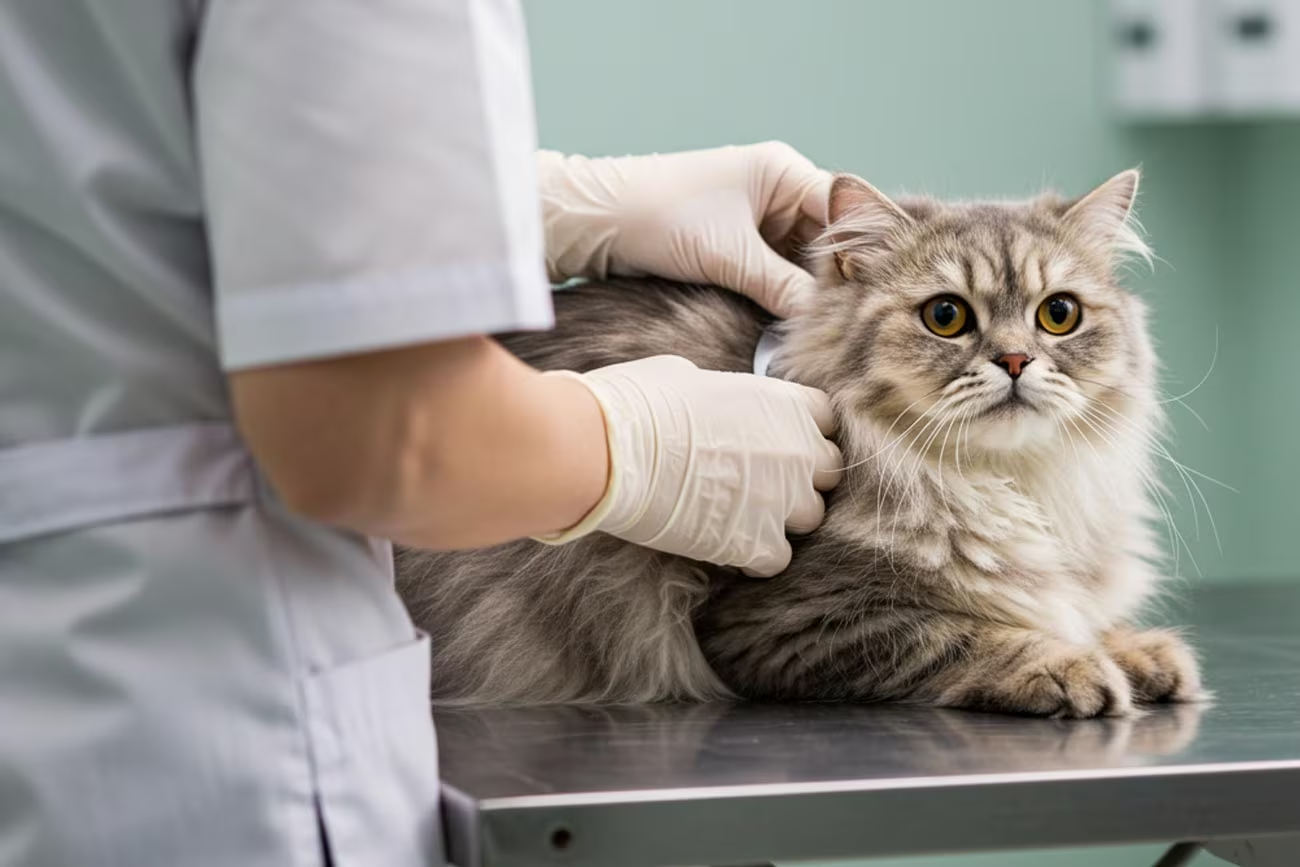Veterinary care
1 - Changes in appetite and water intake
What to look for:
- Sudden loss of appetite: If your pet, who has always been voracious, suddenly refuses to eat or shows disinterest in food they used to love.
- Drastic increase or decrease in water intake: Sudden changes in the amount of water consumed may indicate internal problems.
Why this is important:
Changes in appetite can be one of the first signs of serious illnesses, such as dental problems, infections, or even kidney and liver complications. A drop in appetite can lead to nutritional deficiencies, while a sudden increase in water intake may signal conditions like diabetes or kidney problems, which is why veterinary care is essential.
Tips for owners:
- Monitor meals: Keep track of days without food consumption or reduced appetite.
- Observe behavior during meals: If the animal shows discomfort while eating or swallowing, it may indicate pain.
- Schedule an appointment: If the change persists for more than 24 hours, it’s crucial to consult a veterinarian for a full evaluation.
Practical examples:
Imagine your cat, usually active and playful, suddenly spending hours in the same corner without showing interest in their food bowl. This change could be the first sign of internal discomfort. Upon noticing this alteration, schedule a veterinary care appointment and keep a record of the behavior to help the professional make a more accurate diagnosis.
2 - Lethargic behavior or changes in activity
What to look for:
- Unusual lethargy: If your pet seems tired, sleeps more than usual, or refuses to play and move around.
- Restlessness or agitation: Sudden changes in activity patterns, such as hyperactivity without an apparent reason, also deserve attention.
Why this is important:
Lethargic behavior or, conversely, unexplained hyperactivity can be signs of infections, inflammation, internal pain, or hormonal imbalances. These changes may be the body's response to pathological processes that need to be diagnosed during a veterinary care visit and treated as soon as possible.
Tips for owners:
- Note the changes: Keep a diary of your pet's behavior to identify patterns or symptom progression.
- Analyze the environment: Check if there are environmental changes causing stress, but also consider that lethargy may have an organic cause.
- Consult a specialist: If your pet remains lethargic or displays atypical behaviors, take them to a veterinarian for a detailed evaluation.
Practical examples:
Imagine a dog that, even on sunny days, refuses to go for a walk and prefers to lie down. This lack of energy could indicate anything from a simple indisposition to a heart or infectious problem. Early detection through altered behavior can be crucial for effective treatment.
3 - Difficulty breathing or persistent coughing
What to look for:
- Panting or rapid breathing: If your pet has difficulty breathing or pants excessively, even at rest.
- Persistent cough: A cough that doesn’t go away or occurs in cycles may indicate respiratory problems.
Why this is important:
Respiratory issues can be signs of serious illnesses, such as lung infections, asthma, bronchitis, or even foreign objects in the airways. When the respiratory system is affected, the risk of complications increases significantly, and only through veterinary care can you get the right diagnosis and treatment.
Tips for owners:
- Observe frequency and intensity: Note how often your pet coughs and the intensity of the cough.
- Check breathing effort: See if there’s increased effort to breathe or if the nostrils are always flared.
- Act quickly: In cases of breathing difficulty, don’t wait – take your pet to the vet immediately.
Practical examples:
A cat that suddenly starts having a dry, intermittent cough along with rapid breathing may be showing signs of a serious respiratory illness. These symptoms, even if mild at first, require attention to prevent major complications like pneumonia, so don’t wait—take your pet to a veterinary care as soon as possible.

4 - Changes in appearance and physical condition
What to look for:
- Dull coat or excessive hair loss: A shiny coat is a sign of health; changes in fur may indicate nutritional or hormonal problems.
- Swelling, sores, or unusual skin spots: Red spots, non-healing wounds, or swelling may signal allergies, infections, or insect bite reactions.
Why this is important:
The skin and coat are the "thermometer" of your pet's health. Changes in this area may be the first sign of internal or external problems that require veterinary care. Additionally, some of these signs may indicate parasites, allergies, or even autoimmune issues.
Tips for owners:
- Perform regular inspections: During grooming, check for red areas, lesions, or any changes in the coat.
- Keep the environment clean: Reduce the risk of parasite infestation by keeping the pet’s surroundings and bed clean.
- Seek guidance: If you notice sudden changes in your pet’s appearance, consult a vet to investigate the cause and start proper treatment.
Practical examples:
If you notice your dog’s normally silky coat has become dull and they’re scratching more frequently, these signs may indicate allergies or skin infections. Seeking veterinary care for a detailed analysis can prevent the situation from worsening.
5 - Persistent vomiting and diarrhea
What to look for:
- Frequent vomiting: If your pet vomits regularly or vomits blood or foreign material.
- Diarrhea that doesn’t stop: Continuous diarrhea episodes, even with controlled feeding, may indicate infections or poisoning.
Why this is important:
Although isolated episodes may be occasional, persistent vomiting and diarrhea are signs that something isn’t working well in the body. These symptoms can lead to dehydration and loss of essential nutrients, risking your pet’s health, especially if they’re a puppy or senior. Taking your furry friend to the vet is highly recommended.
Tips for owners:
- Hydration is essential: If your pet shows these symptoms, offer plenty of fresh water and watch for signs of dehydration (like dry gums or extreme lethargy).
- Be careful with food: Avoid offering solid food right after vomiting; opt for a light, easily digestible diet.
- Act without delay: If symptoms persist for more than 24 hours, take your pet to the vet to prevent serious complications.
Practical examples:
A striking example was a small dog that, after eating something inappropriate during a walk, started vomiting and having diarrhea for two consecutive days. Prompt veterinary care is crucial to prevent dehydration and treat possible poisoning, ensuring the animal’s quick recovery.
Understand that...
Identifying the signs that your pet needs veterinary caresigns that your pet needs veterinary care can be decisive in ensuring a long and healthy life for your best friend. From changes in appetite to behavioral shifts and physical signs, every detail matters for early and effective evaluation. Don’t wait: if you notice any of the described signs, seek professional guidance immediately.
Share this article with other pet owners and help spread awareness about veterinary care and preventive measures for our pets. Leave a comment sharing a personal experience or any questions—together, we can build a more attentive and loving community for animals.

















Add comment